
UKC Alpine correspondent and gear reviewer Jon Griffith [Alpine Exposures] takes us through five impressive feats of Alpinism this year. These are interesting and inspirational achievements, documented here in Jon's no-nonsense style. We were inspired by these climbs and climbers and we hope you will be too.
Piz Badile (3308m)- First winter solo ascent British Route (ED1, 600m)
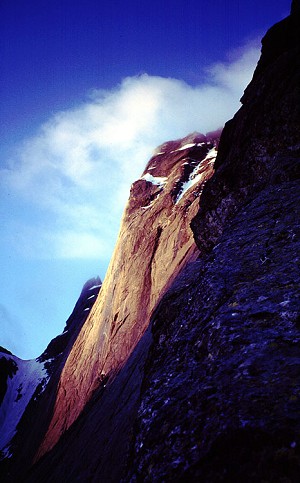
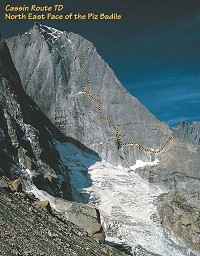
The British Route was first put up in two days by Dick Isherwood and Mike Kpsterlitz, who were in fact trying to repeat the famous Corti - Battaglia route put up in 1953. Whilst this climb was the first on the NE wall, the exact line of the route was shrouded in debate, as Battaglia was killed by lightening on the summit and Corti could never provide a certain enough route description for it. The British route followed the start of the Corti route, then continued up obvious cracks and aid sections to top out after an uncomfortable night in harnesses during which a peg popped out nearly resulting in the death of Isherwood. At the time it was one of the hardest routes in the Bregalia (VI, A2), which is very impressive considering it was first climbed in July 1968.
It was not until February 1982 that the route received its first winter ascent from the two very talented Czech/Slovak female alpinists Zusanna Hofmannova and Alena Stehlikova. It took 26 years until the route saw another winter repeat with Valseschini heading up on the 17 February and summiting 4 days later on the 20th.
This was not Valseschini's only route on the face having already done the first winter solo ascent of the adjacent Brothers' Route in 2007 (Via del Fratello – opened by Antonio and Gianni Rusconi in 1970, thus named in memory of their brother Carlo).
Eiger (3970m)- 1938 route speed record
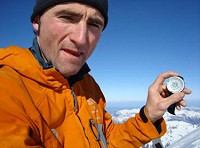
The 1938 Heckmair route was his route of choice for the fastest ever winter solo ascent of the face. In 1963 Michel Darbellay had climbed the route in summer over the course of 2 days completing what for many was one of the last great challenges on the wall at the time, while Japanese climber Tsuneo Hasegawa spent six days on the route in 1978 doing the first winter solo. Exactly 25 years later Christoph Hainz smashed any previous record by soloing the route in 4 hours and 40 minutes (March 2003), and in February 2007 Steck took speed alpinism to new heights by scaling the face in a mere 3 hours and 54 minutes.
February the 13th 2008 saw Steck head off for the route again, hard bent on besting his previous record. To achieve this was no mean feat and necessitated serous training as well as giving the alpine ethos of 'light and fast' a whole new meaning.
“I changed my strategy. When I set up the new record last year, I belayed myself 3 times with 15 meters of rope. This time I made it without belaying at all. I just used a rope loop, which allowed me to hook on occasionally [he used a daisy chain to clip into fixed gear if it was a little sketchy]. All the equipment was about 3 kg lighter than during my speed record of 2007. Further, I reduced my body weight up to 5 kg. All in all I was about 8 kg lighter yesterday than I was last year.”
For those who are wondering what the gear list for the 1938 route should include, you'll be hard pressed to shed as much as Steck did. He headed up with a grand total of:
- 1 Icescrew
- 2 Screw-gate carabiners
- 2 Carabiners
- 1 Quick-draw
- 1 7mm 30m rope.
It should be noted that whilst the face itself measures 1800m in elevation, due to the zig-zagging nature of the route the actual ground covered is in the region of 4000m meaning that Steck was climbing at an average speed of around 24 metres a minute! (Steck times his ascents from the Sandri & Menti memorial tablet to the summit). His tactics obviously worked as he took a full 67 minutes off his previous record leaving us to wonder will he beat it again next year?
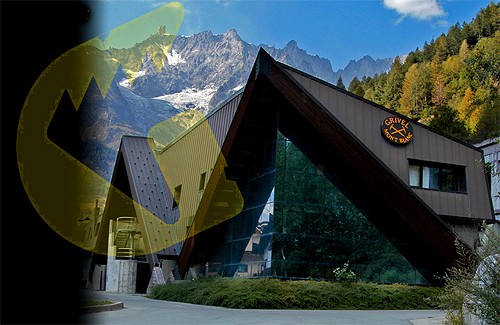
Grandes Jorasses (4208m)- Manitua Second winter ascent (VII+/A3+)
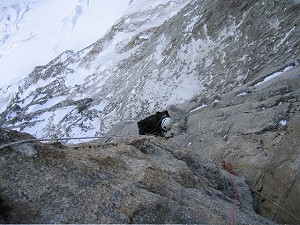
Meanwhile on the North face, Benoit Drouillat, Pascal Ducroz, and the female Belgian climber, Vanessa Francois made the second winter ascent of what is undoubtedly one of the hardest lines in the area. Manitua climbs up the huge shield of rock below the Croz spur (the so called “Nose”) and was first put up in 1991 by Slavko Sveticic who is well known for his impressive solo aid climbs on the words harshest mountains. In preparation for his 4 day solo ascent, Sveticic trained by doing solo laps on the Colton-Macintyre (VI 6, 1200m), climbing it in just 4 hours.
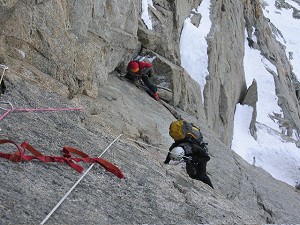
“We would be grumbling when the alarm woke us for 5am, our sleeping bags filled with snow. It was in these hard moments that the courage and determination of Vanessa really impressed me.”
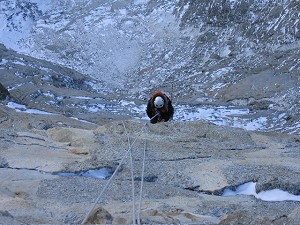
“The long technical sections took several hours each to climb. We did not climb in the purest of style so that we could remain as efficient and fast as possible...One climber on the lead, whilst a second one jumaring up the pitch and helps to haul the bags. The third one cleans the pitch.”
The climbing itself was, as expected, technical and very demanding as Ducroz describes;
“I took a couple of falls. The first time, just passed the belay, I pulled on an alien cammed in some loose crud which ripped whilst I had my foot in an sling; in short: 5 metre head-first, factor two fall which Vanessa held. The other fright was a piton which ripped out in a flake, but this time I was expecting it.”
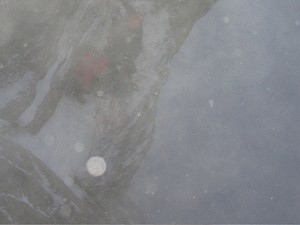
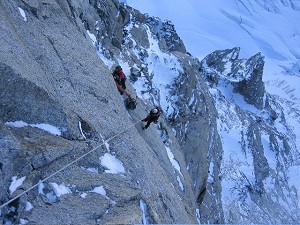
For Pascal Ducroz this was to be one of his last major Alpine climbs. On the 25th May he passed away in a climbing accident. May he rest in peace (pascalducroz.canalblog.com)
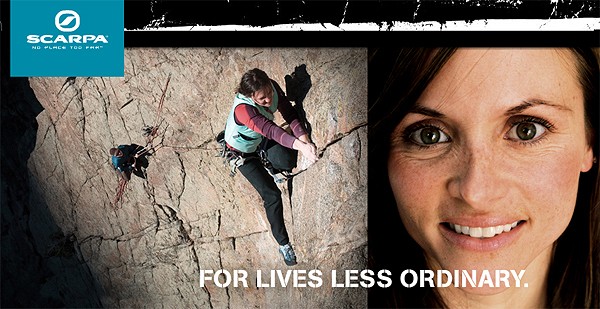
Dru North Couloir
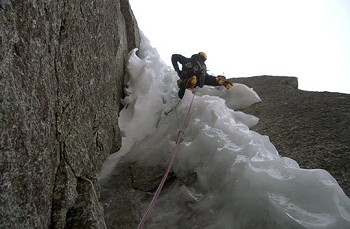
In January two Slovenian climbing teams arrived in Chamonix and set about climbing some of the classic test pieces that Chamonix has to offer. Amongst these, they both successfully free climbed the Dru North Couloir Direct which had previously only been climbed with aid points. The two teams, Andrej Grmovsek and Marko Lukic, Tina Di Batista and Tomaz Jakofcic, both climbed the route onsight and reported a grade of (VI 6+ M8) with Grmovsek describing it as “one of the ultimate hard mixed climbs above Chamonix”.
The much more difficult “Direct” variation of the North Couloir was opened, probably by mistake, by John Roberts and Steve Shea in August 1977, but the pair didn't complete the line up to the summit, as they had to make a dangerous retreat in a storm. A few days later an American pair, Rick Accomazzo and Tobin Sorenson, made the first complete ascent. This variant, which follows a sequence of deep chimneys, is very rarely in condition, and is normally climbed using points of aid. The original route opened by Cecchinel and Jaeger avoids these chimneys by an easier (but still far from easy) detour on the left.
The technical difficulties are roughly in the middle of the climb with the crux being a “steep and sometimes overhanging dry mixed corner”. The difficulties were sustained too, encompassing a total of “five pitches of perfect climbing at quite a hard grade.”
Di Batista and Jakofcic took a slightly different variation which they thought was probably easier than the climb that Grmovsek and Lukic did just previously. All in all Grmovsek said it was by far the best mixed climb he had done.
The climb is even more impressive considering the lean conditions at the time. “The problem with this winter [2007/2008] is that it has been very dry and no ice routes or faces were in condition. But without a doubt there are some big vertical faces that lend themselves well to modern mixed climbing where the rock is pure with little snow and ice and is always in the same conditions.”- Grmovsek isn't telling where though!
Ecrins Enchainment
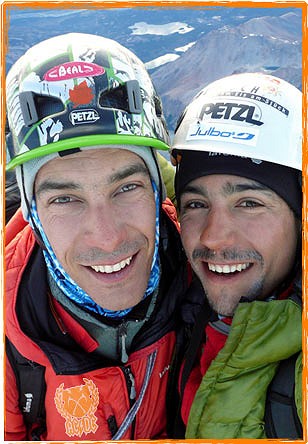
Whilst the Ecrins massif may have only one peak that breaks into the 4000m barrier it is by no means an easy area to climb in. On the 25th September the pair set off from La Grave and climbed La Meije, La Roche Méane, La Roche d'Alvau, Le Dôme des Ecrins, Ailefroide, Les Bans, Le Pic Bonvoisin, and Le Sirac. A huge undertaking to say the least.
The pair had already tried the link up earlier on in the year in April but we beaten by very poor weather and dangerous snow pack conditions. For the first time in their career they had to be picked up by the rescue services as they found themselves stuck surrounded by a very weak snow pack. However the duo returned in September when conditions were a bit more favourable but by no means easy. “The hardest part was the ascension of the Ailefroide in poor snow, icy fog, and spin drift avalanches falling on us from 1000m above. We navigated in a pitch black night by map, compass and altimeter. On the abseil descent we took 3 hours to find the hut which was only 70m away from us” added Dumarest.
They relied on hut food as well as caches left by friends for food and supplies. However “there was a problem on the descent from the Bans. There was no cache waiting for us, we were at the end of our tether. We spent 20 hours without eating before attacking the Pic Bonvoisin”. An impressive feat of endurance and alpinism for which Patrik Gabarrou commented that “their performance relied entirely on their union, their solidarity, the bond of the rope. These two men are just as one- their exploit is nothing short of remarkable”.
To the Alpine by C Nichols
Trees crown the mountainside in glory
Swathed in deep green pulsing with life
It fills even old tired eyes with awe
Songs of life, and waters sustaining
Flow through each valley, each peak
Soon the eyes may wander to smaller details to recognize
A lonely oak clings desperately in a crag
Like a new testament of perseverance
Crisp air whistles around reddening ears
I would climb any mountain
To breathe deeply again the fresh alpine air
My being is filled with forever
Aloft on the heady scents of life
Bursting blossoms around me
I meditate on beauty fulfilled
©2007 C.Nichols
- Desmaison Gousseault: Grandes Jorasses 3 Feb, 2015
- Jon Griffith Photography Website 10 Dec, 2013
- Jon Griffith - My Top 20 Photos, Part 2 22 Nov, 2012
- Jon Griffith - My Top 20 Photos, Part 1 15 Nov, 2012
- Alaska: Winter Climbing Expedition Gear 6 Mar, 2012
- DESTINATION GUIDE: Climbing Denali's West Buttress, Alaska 4 Oct, 2011
- WHAT TO WEAR FOR: Alpine Winter Climbing 7 Mar, 2011
- Hagan Extreme Approach Skis 18 Feb, 2011
- PHD Hispar Down Jacket and Minimus Down Trousers 21 Dec, 2010
- La Sportiva Spantik Mountain Boots 25 Nov, 2010

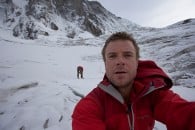

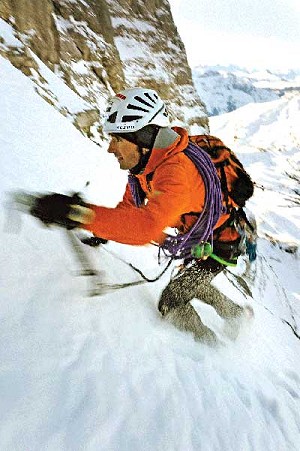
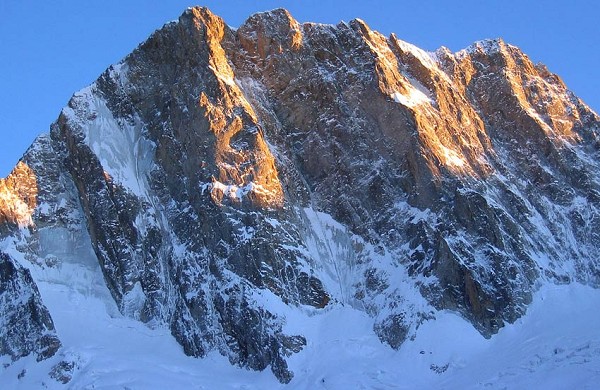
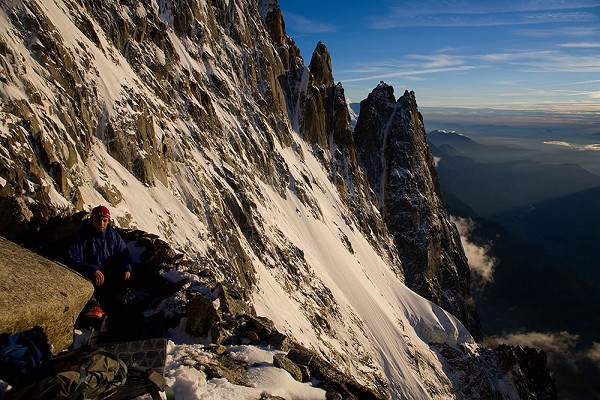
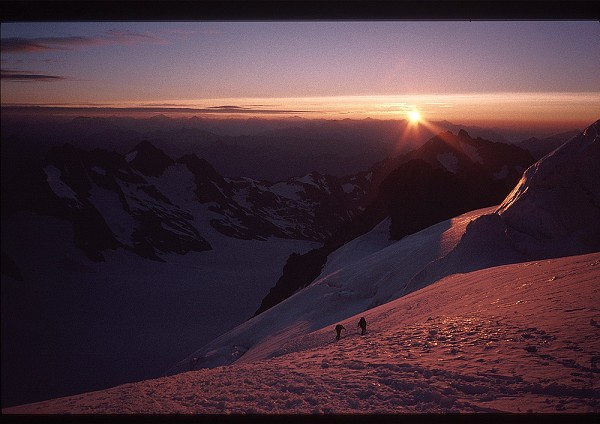






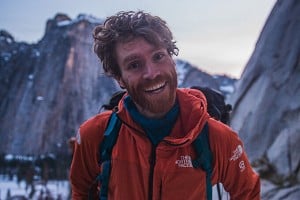
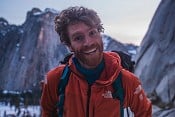
Comments